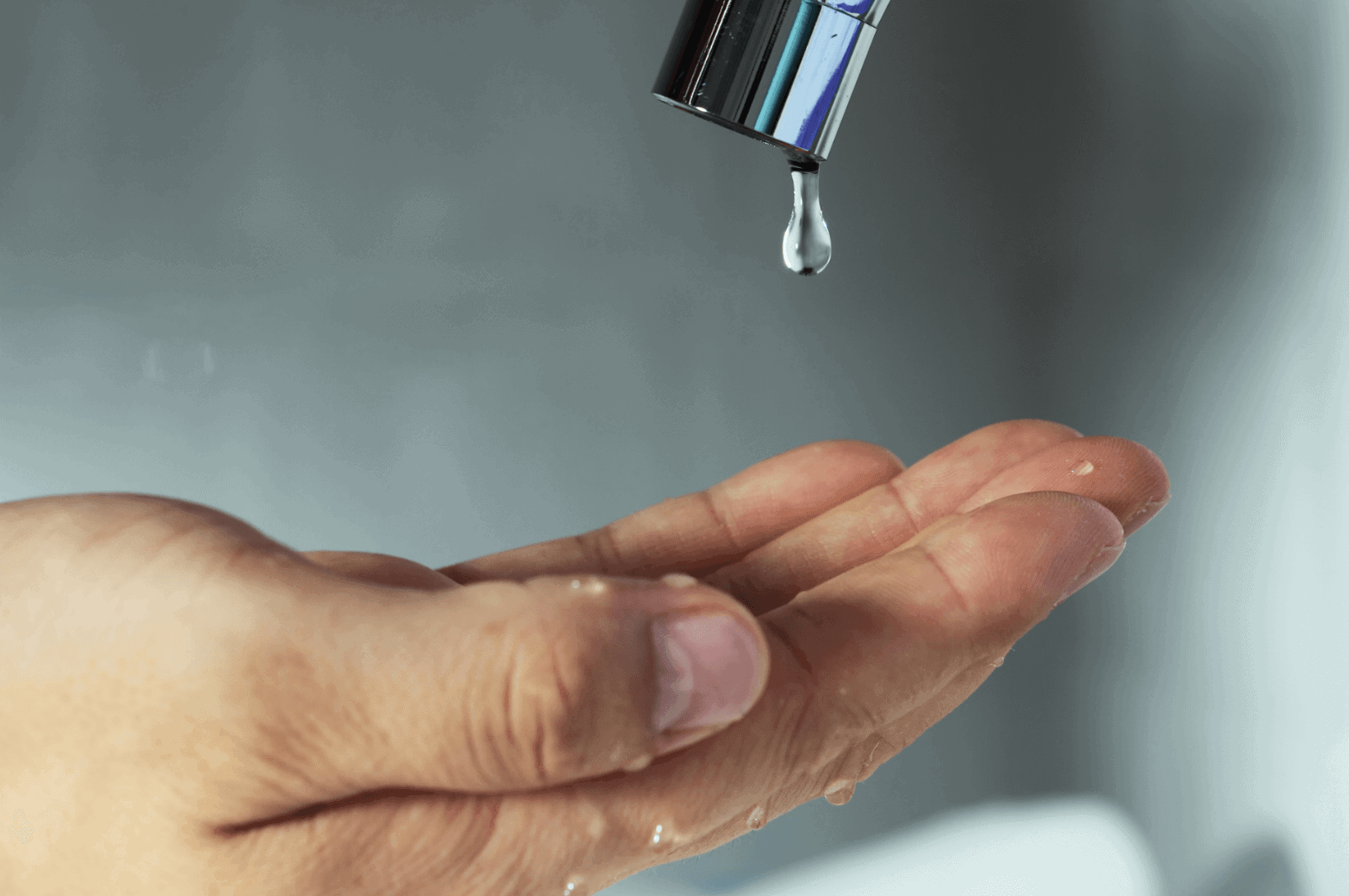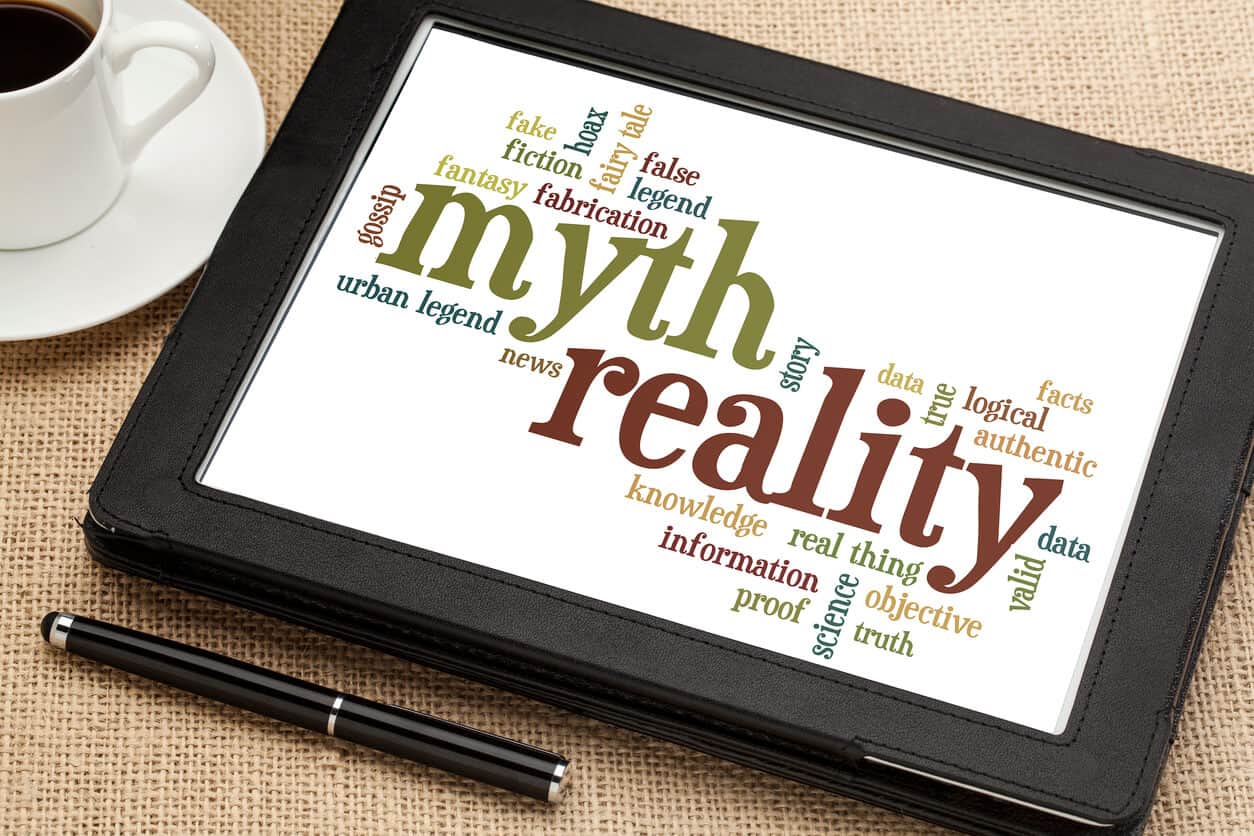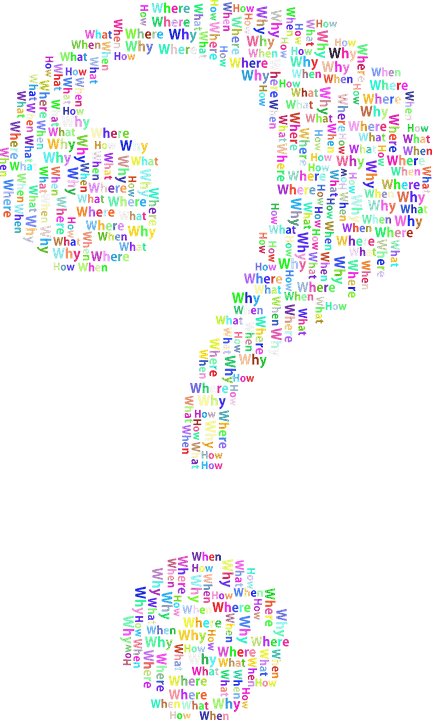Water Conservation – Resources, Myths, Facts, Diet Concerns - 13 Things You Need to Know
We’ve all heard it before – “Don’t run the sink for too long!” or “If you’re not in the shower, turn it off!” The truth is, we’ve all rolled our eyes at our Moms for pushing water conservation on us at an early age.
We thought, “There’s so much water on this planet, what are you worried about?”
As it turns out, our Moms were right – as usual.
While the Earth’s surface is covered in around 71% water, only 3% of it is fresh. Of course, we have ways of transforming that saltwater into fresh, drinking water – but it comes at a price.
Let’s look at some benefits of water conservation and some facts, tips and resources you can follow to start saving money – and maybe the world.
The Benefits of Conserving Water
When it comes to water conservation, the benefits range from small to large and could be reaped by cutting back just a few drops each day. Let’s take a look at some of the benefits of conserving water:
Conserving Water Saves Money
Let’s start with a more obvious reason why water conservation is just a plain good idea. It saves money. It’s also most likely the first benefit that pops into our heads when we hear anything on this topic.
Sure, appliances are using less water nowadays. According to The Pennsylvania State University, in the 1950’s, flushing a toilet would use up 7 gallons of water, while these days it’s significantly less. Faucets, showerheads, washers and dryers are all designed to be more efficient – but this doesn’t mean you can’t save buckets of money by not using buckets of water.
For a home in the US, the average cost per gallon of water is about 15 cents. While this seems like pocket change, considering that it takes up to 6 gallons just to flush a toilet, it starts to seriously add up.
Water Conservation Saves Energy
This is more of a blanket statement because practicing water conservation in your home won’t only save you – it helps save the world.
Since grabbing, purifying and distributing water takes energy, going easy on the showers could lead to that energy being used elsewhere.
Western Resource Advocates state bluntly, “Energy and water are inextricably linked: Colorado’s water utilities use energy to pump, treat, and distribute potable water; customers use energy to heat, cool, and/or pressurize water; and wastewater utilities use energy to treat and discharge wastewater. By conserving water, water utilities and customers can save energy.”
They go on to write that water conservation can lend “significant energy savings,” that will not only save money for us, but will also reduce a State’s greenhouse gas emissions.
As the demand for water increases in your city, so does the energy that’s used to treat and pump it to the masses.
Reducing the amount of water in your home or place of work means that energy can be saved.
Water Conservation and Agriculture
Farmers in California have been updating equipment and practicing more modern irrigation techniques, with one looming issue. Water conservation.
According to the Pacific Institute, “Water-efficiency strategies provide important benefits to farmers, ecosystems, and society. Some of the water saved represents new supply that can be dedicated to other uses.”
They list some of the benefits of water conservation being:
- Maintain agricultural production
- Less polluted run off into rivers and streams
- More water to support in-stream flows
- Less vulnerability to drought
- Reduction of non-beneficial consumptive losses
Conserving Water Helps the Environment
Did you know that 80% of global wastewater returns to ecosystems untreated? If we circle back to one of the benefits that water conservation has on agriculture, it becomes clear what “less polluted runoff into rivers and streams” actually means.
Conservation International writes that “Agriculture, industrial processes, untreated waste and degraded lands are leading causes of pollution in freshwater systems,” adding that poor water quality negatively affects fisheries and threatens freshwater species.
Environmental Risks
- Runoff from over-irrigation causes pollution
- Overusing water could lead to additional dams and reservoirs, not to mention additional wastewater treatment facilities
- Surface withdrawals could lead to endangered habitats
- Increased energy needed to treat wastewater and byproducts from power plants
How to Conserve Water in Your Home
Saving the environment, saving energy or saving a bit of money doesn’t require you to boycott showers for days on end. In fact, there are simple ways to save water that some folks overlook.
Update/Fix Your Appliances
According to energy.gov, you can save water (and some money) by updating and repairing your appliances. For example, replacing an old toilet that uses 6 gallons of water per flush with a more efficient variety could save you $100 per year – not to mention gallons of water for each bathroom visit.
A faucet that leaks one drop per second could waste around 1,661 gallons of water per year. That’s a small swimming pool.
Turn off Your Faucet
A lot of us are guilty of running the tap while brushing our teeth. But did you know that turning off the tap until it’s time to rinse can save up to 200 gallons of water each month?
NC State University mentions this, along with other occasions, where stopping the flow is the way to go. These include:
- Shorter hand-washing sessions – If you wash your hands for 20 seconds you can save 6 gallons per day.
- Energy-efficient dish washer – Turn off the faucet and turn on the dish washer. You waste 5 times more water washing dirty dishes in the sink than you do using an energy efficient machine.
- Cook smart – Wash fruits and veggies in a pan of water instead of under the tap.
Here are some more resources for water-saving tips:
How to Conserve Water at Your Workplace
Whether you work in an office or run your own business – there are a bunch of ways to cut back on the H2O.
Talk to Your Staff
According to Business Queensland, you should have a conversation about water conservation with your staff. They mention:
- Talking to staff about water savings initiatives. Talk about policies and procedures on water saving.
- Encouraging staff to contribute with ideas on water conservation.
- Discussing water efficiency during staff meetings and show them reports on the amount of water the business uses.
- Establishing a baseline for water use and setting goals for saving water.
Sweep Instead of Mop
Thinking of mopping the floor? Think again. Most of the time you waste water mopping when a simple sweep-up would do.
The next time you’re thinking of filling up the mop bucket, reach for the broom and save from unnecessarily wasting water. Unless, of course, you work in the food industry or need to follow a specific set of rules.
Rethink and Re-plan Your Gardening Strategy
You may want to consider installing rainwater tanks, using drought-tolerant plants and applying a generous amount of mulch to keep the moisture in the soil. Also remember to water your plants in the morning or in the evening.
Learn more about water conservation at work here:
Conserve Water with WaterSense-Backed Products
If you investigate water conservation for even a few minutes you’re bound to come across someone mentioning or suggesting WaterSense. WaterSense is a U.S. Environmental Protection Agency program aimed at water conservation.
The goal of this partnership program is to protect the future of our water supply by “enhancing the market” for water efficient services and appliances.
WaterSense offers a range of products and services designed for one thing: Saving as much water as possible. Included in their arsenal are:
- Showerheads
- Toilets
- Bathroom faucets
- Urinals
- Irrigation controls
- Single family new homes
- Sprinklers
- WaterSense-certified professionals
And more…
In addition to that, they offer tips, statistics, facts, and a partnership program.
WaterSense Partnership Program
The EPA-backed WaterSense wants to get water-efficient appliances on the shelves. To do this, they need to recruit the help of partners to promote products and services in categories like:
- Utilities, communities, state and local governments
- Manufacturers
- Retailers and distributors
- Organizations that provide qualified certification programs
- Certified professionals
- Non-profit organizations and trade associations
The responsibilities for partners are:
- Promoting WaterSense as well as water efficiency
- Adhering to WaterSense partner logo guidelines
- Providing annual data
Granting EPA rights to use partner name on the Agency website or alongside other program promotional efforts.
Water Conservation Myths
There are some common misconceptions surrounding water conservation that we felt were important enough to share. Even we were, admittedly, shocked by one or two of them.
Save Water by Bathing
A lot of people think that taking a bath saves more water than letting the shower run. While we can’t blame anyone for thinking this, it’s just simply not true.
Of course, there are exceptions – tiny bath tubs, long showers, etc.
Truth is, filling a bath tub with water wastes more than a quick shower.
The Water Crisis
In the news, you may see headlines like:
- The demand for water throughout the world has tripled over the last 50 years
- A lot of the world’s rivers are shrinking to a fraction of their original size – some of them completely drying up
- The lakes are disappearing rapidly. Lake Mead in Nevada is half of its original size and according to one study, there’s a 50/50 chance that it’s gone in less than 15 years
Even though the Earth still provides us with plenty of water, with over 360 Quintilian gallons of water on the planet, another issue, according to Live Science, is the amount of money it would take to desalinate our saltwater.
What I Do with My Water Doesn’t Make a Difference
Ah, yes. We all sometimes think that what we do in our lives doesn’t have an impact on the bigger picture. There are statistics that show how much of an impact we can make together.
If everyone in the US saved just a few drops of water each day, the results would be staggering.
Learn more about the little things you can do to help save water, energy and the ecosystem:
Bottled Water is Safer Than Tap Water
The commercial pops on: It’s a picturesque spring morning. There’s a crisp, rushing river surrounded by lush forest on either side. A smiling family plunges their water bottles into it and drink happily while you’re gulping down something that just came from your tap.
You think, “I want what they’re having.”
“Arctic Springs…taste the fresh natural freshness of nature.”
“That’s it – I’m buying it.”
Yeah, those commercials really know how to sell bottled water. The truth is, the FDA and the EPA each share the same exact standards when it comes to the water they’re providing.
Additionally, bottled water requires much more water and energy to make than simply getting a drink from your tap.
Find more myths about water conservation at these sites:
Water Usage Facts
- A standard dish washer uses around 6 gallons of water per load, while hand-washing uses around 20 gallons.
- The average person uses 140-170 gallons of water every day.
- Taking a shower in under 5 minutes can save you 1,000 gallons per month.
- If you turn off your shower while you shampoo and condition your hair you can save up to 50 gallons each month.
- A person can only live without water for about one week
- Americans flush 6.8 billion gallons of water every day
- A family, on average, can save 13,000 gallons of water per year by having old toilets replaced with WaterSense-backed models.
- The average family wastes around 9,400 gallons of water each year from leaks alone.
- Watering an average lawn for 20 minutes a day, 7 days a week uses as much water as it does taking 800 showers.
- To make one day’s supply of U.S. newsprint, 300 million gallons of water is required.
Read more eye-popping tips, statistics and facts here:
Saving Water to Save the Animals
It seems so obvious, yet we may not think about it every day. Water conservation can be directly linked to saving animals.
When we use water conservatively, we’re helping to maintain natural wetland habitats. The Wildlife Trusts go into detail about the positive impact we can make if we just turn off the faucet.
They quote Andy Brown, Anglian Water’s Climate Change & Environmental Performance Manager, “We share this most precious of natural resources with the wildlife and wild places that help to define our region and make it such fantastic place to live and work. By making better use of water in our everyday lives we can all help to ensure there is enough to go around, now and into the future.”
According to EOS, studies show that by eating less meat and fewer animal-based products could reduce water use since animal production uses more water than crops do. In addition, reducing the amount of food that’s lost or wasted at various points in the food supply chain could feed about 1 billion extra people while simultaneously reducing water use.
Endangered Fish
There are several endangered fish species:
- Bull trout
- Coho salmon
- Pygmy whitefish
- Chinook salmon
- Sockeye salmon
- Steelhead trout
All of them caused by human activity. Streams and rivers are being run dry due to over use of water. When we save water, there’s more for the fish – specifically for the Salmon. They need their annual upriver run to reproduce.
What Can I Do to Conserve Water?
Whether it’s saving some money, energy or the ecosystem – more and more people are finding ways to invest in water conservation.
Save Water Indoors
- Take shorter showers
- Invest in water-saving appliances and “low-flush toilets”
- Check your house for leaks – toilets, pipes, faucets, etc.
- Defrost your food in the fridge
- Clean fruits and vegetables in a pan of water
- Rinse dirty dishes in a pan of water as well
- Only wash dishes when there’s a full load
Save Water Outdoors
- Make sure all hoses have shut-off nozzles
- Don’t use too much water when landscaping – sometimes just a bit will do
- Make sure you water your lawns in the early morning or late at night
- Do not water your lawn during rainy days or days when heavy rainfall is expected
- Use drip irrigation systems
- Make sure your sprinklers aren’t watering the sidewalk or the street
- Plant more shrubs and bushes to reduce your grass coverage
- Use mulch to keep moisture in and reduce evaporation
- Install a rain barrel for outdoor watering
- Monitor your water bill and ask your local government about a “home water audit”
- Plant native plant species in your garden – depending on where you live, native plants may require less water to grow.
More tips to saving water at home and outdoors:
Energy-Saving Appliances
Fun fact: Energy efficient appliances aren’t always more expensive.
Energy-Star rated appliances are designed to be much more efficient than the others. Refrigerators, for example, can be up to 10% more efficient – and save families up to $300 throughout its lifetime.
Switching from an old washer to an energy-efficient variety can save you up to $200 a year.
Even if the appliance’s price tag is a bit high – consider the savings. In most opinions, buying an energy-efficient product is a win for everyone.
Change Your Diet to Save Water
It’s no secret American citizens use water. Whether as a refreshing beverage, an appetite suppressor or as a part of a healthy diet, water use is on the rise. According to WaterFootPrint, with on average use of 2,000 gallons of water per day; Americans now use more than twice the global water use. While the number is staggering, the majority of the water use is in the form of commercial production and agriculture.
What’s more, nearly 40 percent of water use goes to daily and meat production.
One way to save water is by choosing a diet limiting meat; considering it accounts for nearly 40 percent of water use, NYTimes reports.
Additionally, the American diet also accounts for nearly 1,000 gallons of water per person, per day for diet. The footprint on a global scale is approximately 900 gallons of water per day, per person for diet, NationalGeographic says.
For example, one serving of chicken in your diet accounts for roughly 90 gallons of water.
Water Conservation and Nutrition
When looking for ways to save water, one must consider nutrition choices. Water use for agriculture accounts for nearly 70 percent of the water use globally. This is far greater than domestic water use coming in at roughly 10 percent.
According to research from the Barilla Center for Food & Nutrition, environmentally sustainable and healthful diet work together. Some ways to conserve water and boost nutrition include:
- Eat less meat
- Steam vegetables
- Support small, family-owned farms
- Streamline home water use
- Limit food and water waste
Wen you consider water conservation and nutrition, one must also consider weight loss. Any healthy diet and nutrition plan for weight loss should include water. But, how can you drink more water, but still be mindful on saving water?
According to Texas Water Resources Institute, one way is to use reusable water bottles instead of disposable ones. Then, you can fill up your water bottle in the convenience of your home or on the go. By using a reusable water bottle as a part of your weight loss plan, you are not only drinking more water, but saving up to five times the water used to produce a water bottle.
You can also consider alternatives to drinking plain water. You’ll continue to up your water intake, while still consuming beverages connected to weight loss. According to MedicalNewsToday, research shows the connection between green tea and weight loss. To save water, fill up a kettle, which allows you to drink tea throughout the day while saving water.
The Bottom Line on Water Conservation
By now we should all know that saving water could help save money, energy, wildlife, and even the planet.
But what often slips our minds is just how simple saving water at home (and at the workplace) can be.
Remember that it all adds up – what may seem like just a few drops a day could mean a world of difference for your bank account and for the environment.
The next time you’re thinking about taking a hot bath, remember Mom’s stern words and consider a quick shower instead.
Afterwards, give yourself a quick glance in the mirror and smile – you’re making a difference.
Water Conservation – Resources, Myths, Facts, Diet Concerns Questions & Answers
- Recent:
There are five main methods of water conservation:–Reduce water usage – Use efficient appliances, fix leaking faucets and toilets, and take shorter showers.–Reuse water – Collect rainwater for gardening or other non-potable uses, use greywater for irrigation, and collect wastewater for fertilizer production.–Conserve energy – Decrease the energy needed to heat water by insulating pipes, turning down the temperature on the hot water heater, and using energy efficient washing machines.–Reduce pollutants – Fertilizers and pesticides used in agriculture can run off into bodies of water so it is important to use organic fertilizers instead.–Practice sustainable agriculture – Conservation tillage reduces erosion, crop rotation maintains soil fertility, and cover crops reduce weeds while increasing organic matter in the soil which helps retain moisture.

Summer Banks has researched over 5000 weight-loss programs, pills, shakes and diet plans. Previously, she managed 15 supplement brands, worked with professionals in the weight loss industry and completed coursework in nutrition at Stanford University.



